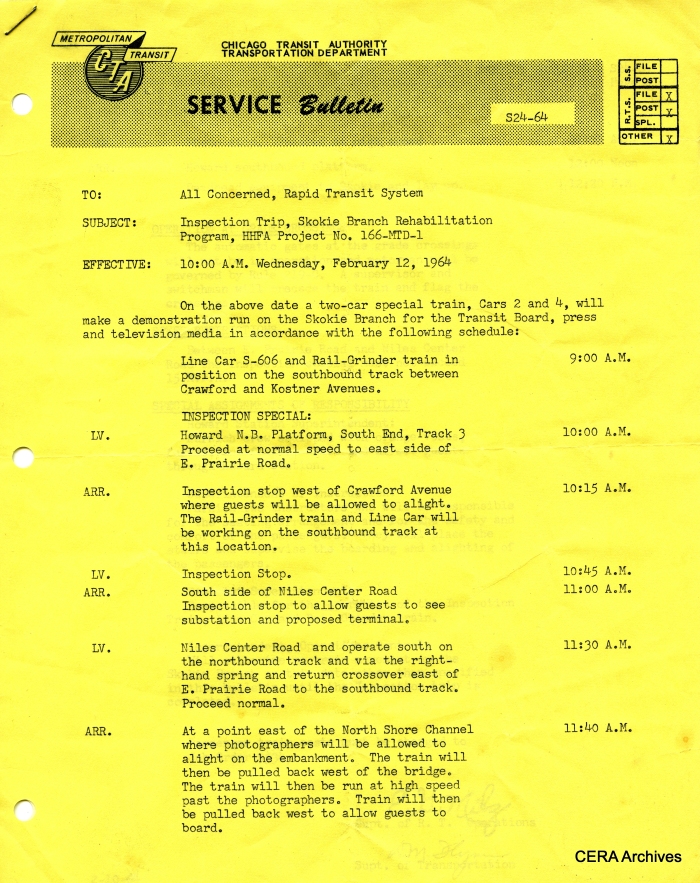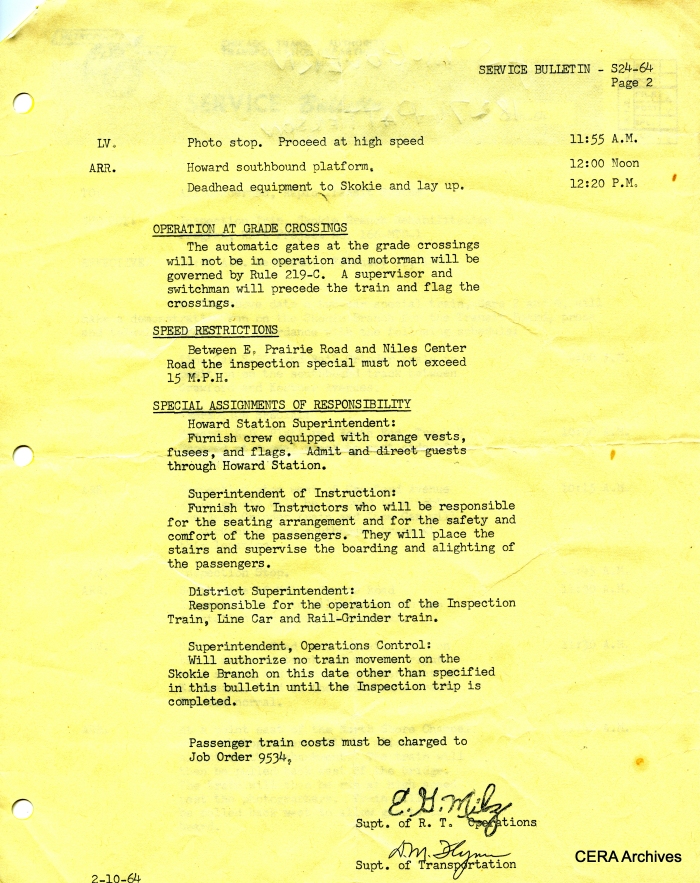It’s hard to believe for some of us “of a certain age,” but the CTA Skokie Swift has now been in service for 50 years as of today. Yes, weekday service began on April 20, 1964. To this author, it seems like only yesterday.
What started as an experiment, a “demonstration project,” has been a great success by any estimation, even as the Swift (today’s Yellow Line) has changed and adapted over the years with the elimination of overhead wire and the addition of a station at Oakton.
This is something where I have a bit of personal history, as I recall riding the Swift on the weekend prior to the beginning of regular service, when CTA was showing it off to the public for the first time. It was a thrilling and exciting ride, as the “spam cans” exceeded 60 mph on the five mile run between Dempster and Howard.
The story has been told many times before. When the North Shore Line abandoned service in January 1963, the Chicago Transit Authority needed 2.5 miles of its former Skokie Valley right-of-way to access Skokie Shops. It would be easier to justify the purchase if this could be turned into revenue trackage.
We can lament how only a small portion of the North Shore Line was saved; but at least some of it was actually saved, and is still with us today.
CTA rushed ahead with plans for a high-speed service between Dempster, where a large parking lot was built, and Howard, where riders could change trains to continue Downtown or to Evanston and Wilmette.George Krambles, CERA’s Member #1, headed up the project.
The latest issue of First and Fastest magazine, put out by the Shore Line Interurban Historical Society, offers an excellent account of how this all came about. We humbly offer our own contribution in this first in a two-part series.
By the end of the 1950s, CTA felt that it had done all that was possible to economize, and yet had learned that fares alone could not cover all the costs of transit. The Swift was one of the first instances where Federal money helped pay for mass transit improvements. Therefore, the success of the project was a high priority for CTA.
It was so important, in fact, that CTA officials actually announced to the press that they would go ahead with it, even if Federal money was not forthcoming. CTA had been experimenting with high-speed railcars since 1955, and had been adding park-and-ride lots near CTA stations since about the same time; the Skokie Swift was the culmination of these efforts.
The line was designed to attract suburban riders who did not want to fight traffic on the nearby Edens expressway. Ridership estimates were originally based on North Shore Line traffic. The North Shore Line had not been marketing this type of service effectively, and therefore actual ridership greatly exceeded expectations once the Swift began service in April 1964.
The first timetable (reproduced below) went out the window within a few minutes, and the CTA scrambled to keep up with the demand. Over time, additional railcars were pressed into service to go along with the original 1-4 high-speed PCC single car units. The four experimental articulated cars (originally 5001-5004, later renumbered 51-54) became stalwarts of the Swift fleet, even though they could not match the top speeds of the other cars. Along with these, some additional single car units from the 1-50 series were converted for Skokie service over the years.
In 1968, CTA issued a final report for the demonstration project, which you can read here. I am glad to report that years ago, George Krambles sent me a copy. For the rest of his life, he was justifiably proud of the project.
We offer here a selection of photos taken of this portion of the Skokie Valley Route over the years. In addition, you will also find below a copy of Skokie Swift timetable #1, and the service bulletin for the first inspection trip on the Swift, which took place on February 12, 1964.
At that time, the Dempster terminal had not yet been built, so the inspection train could only go as far as Niles Center Road. A rail grinder was hard at work on one track, while the inspection train used the other. This trip probably took place as soon as the CTA was able to restore electric power to the overhead wire west of Skokie Shops. There is a photo in the final report dated February 11, 1964, showing workers repairing a rectifier.
We hope that you will enjoy this slice of transit history. Our second installment in the Skokie Swift series will appear in the next few days.
-David Sadowski

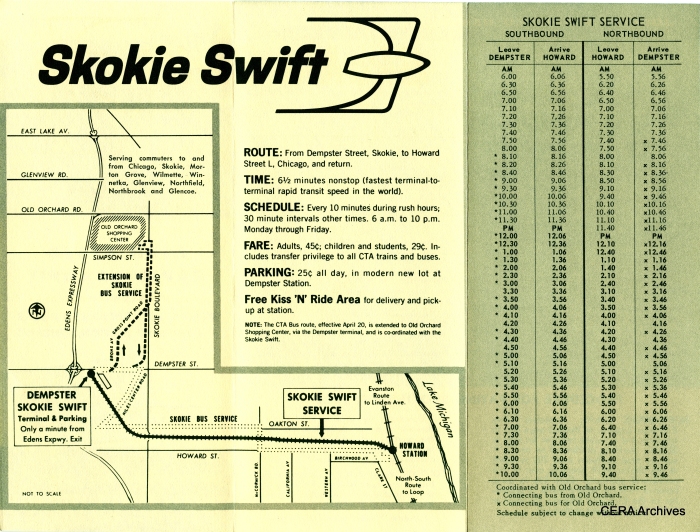
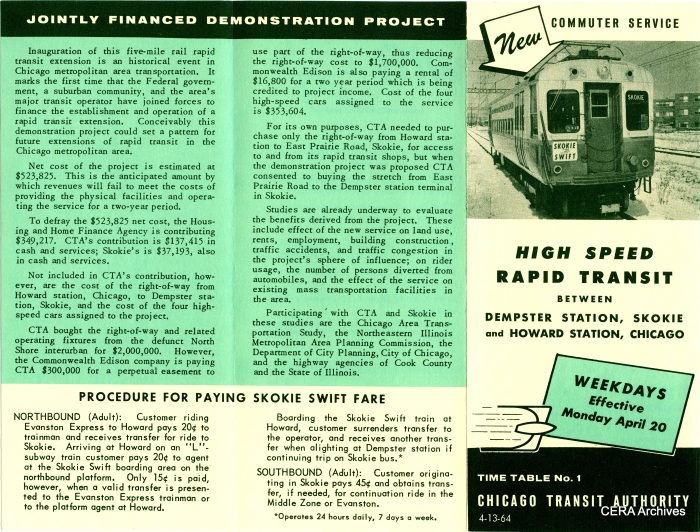
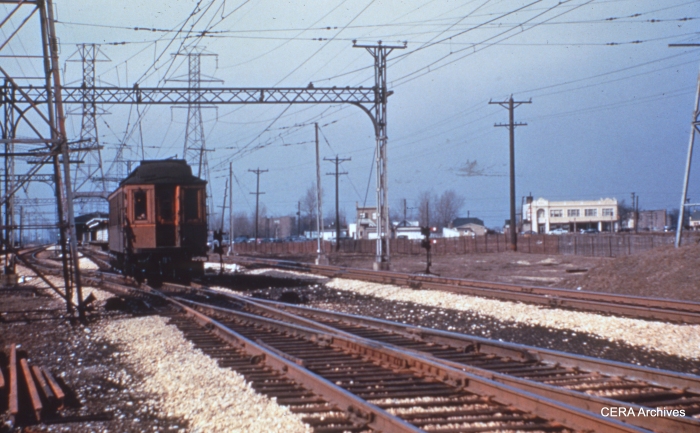
In this late 1940s photo, we can see how sparsely developed the area around the Dempster station still was, twenty years after service began on the CRT Niles Center branch. (CERA Archives)

The Insull-owned CRT instituted Niles Center service in hopes that development would follow. Eventually, it did, after WWII, but not fast enough to save this branch line. (CERA Archives)

A Niles Center car in the 1940s. (CERA Archives)

Rapid transit service on the Niles Center branch ran from March 28, 1925 to March 27, 1948, before being replaced by the CTA 97 bus. Here, a southbound car leaves Dempster in this winter view. (CERA Archives)
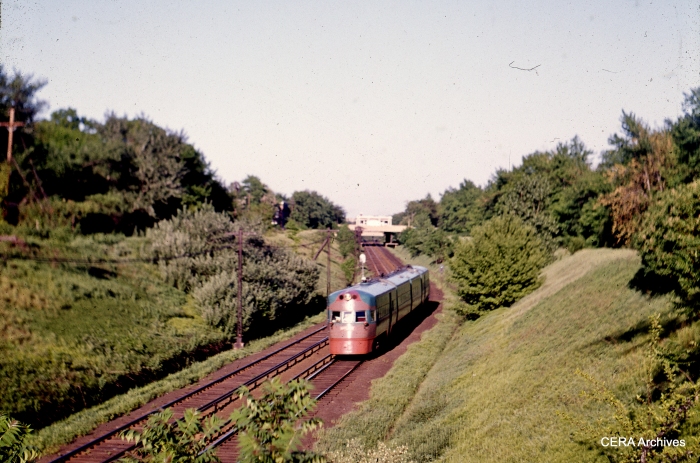
An Electroliner in the Evanston open cut in July 1962. (CERA Archives)
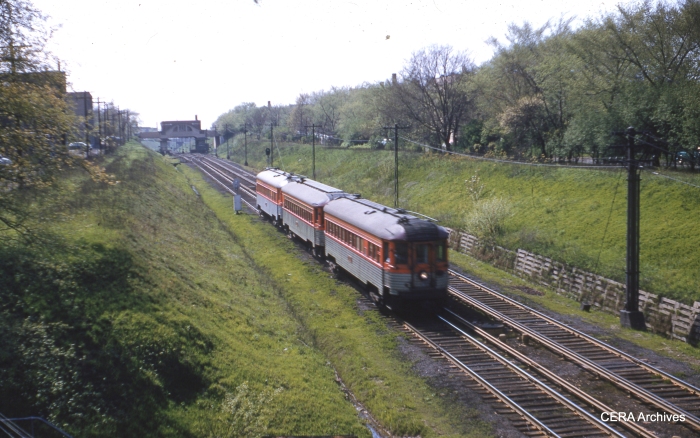
A three-car train of North Shore “Silverliners” in the Evanston open cut in May 1955. (CERA Archives)

A view of the Dempster station as it looked in October 1961, with just over a year of North Shore Line service remaining. To the south of the Insull-era building, you can see the remnants of the high-level platform that would have been used for CRT Niles Center service. These were removed by CTA and a new, very basic platform was built for Swift service. (CERA Archives)
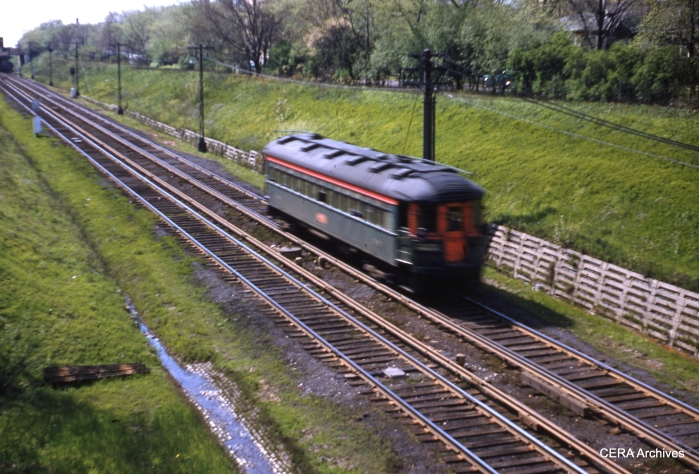
The speed of this North Shore “Greenliner” single car is evident in this photo from May 1955. (CERA Archives)

CNS&M “Silverliner” 251 (now preserved at the Illinois Railway Museum) is at the rear of a two-car train approaching Howard. (CERA Archives)
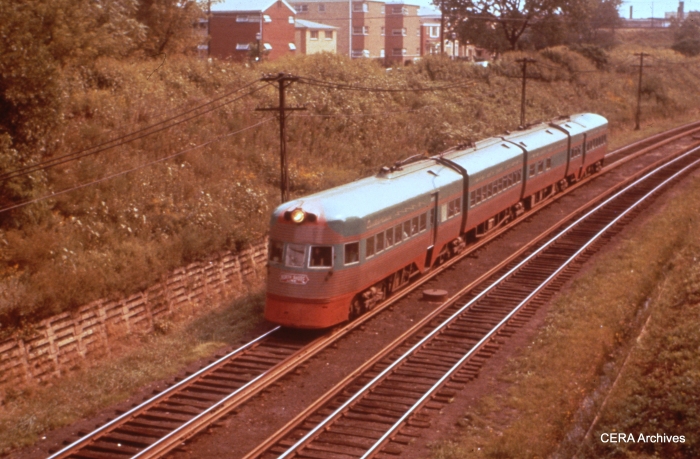
An Electroliner “at speed” in the Evanston open cut. (CERA Archives)
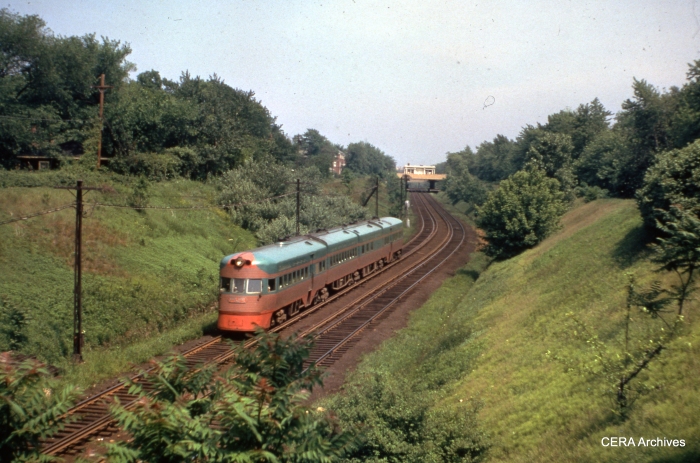
A CNS&M Electroliner speeds through the open cut in Evanston. The former Asbury station is visible in the background. (CERA Archives)

The derelict North Shore right-of-way at Crawford Avenue in July 1963. The wire is up, but the rails are rusty after not having been used in several months. (CERA Archives)
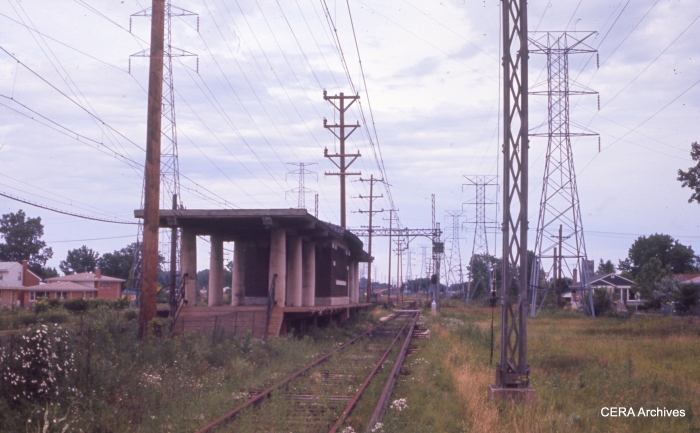
Another view of the derelict North Shore right-of-way at Crawford Avenue in July 1963. This station and some others were removed within a few months of the Swift’s opening. (CERA Archives)
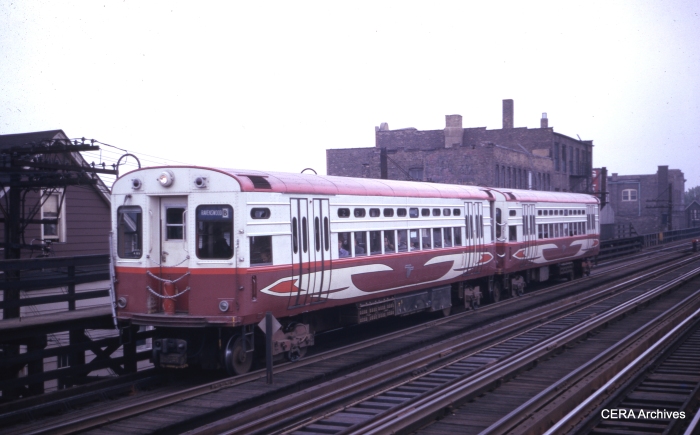
CTA experimental high-speed car 2 heads up a Ravenswood (today’s Brown Line) train in December 1962. Less than two years later, the four high-speed cars would start service on the Skokie Swift. (CERA Archives)

A pair of CTA high-speed cars, making up part of a train in this August 1960 view at Howard. Cars 1-4 would be the first used in Swift service in 1964. (CERA Archives)
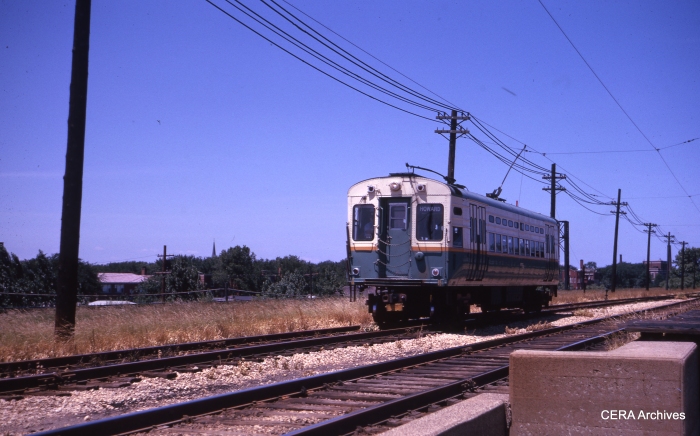
From 1961 to 1973, CTA operated PCC single car units in Evanston service with trolley poles. Some of these cars were eventually adapted for use in Skokie service. Here we are opposite Calvery cemetery. (CERA Archives)
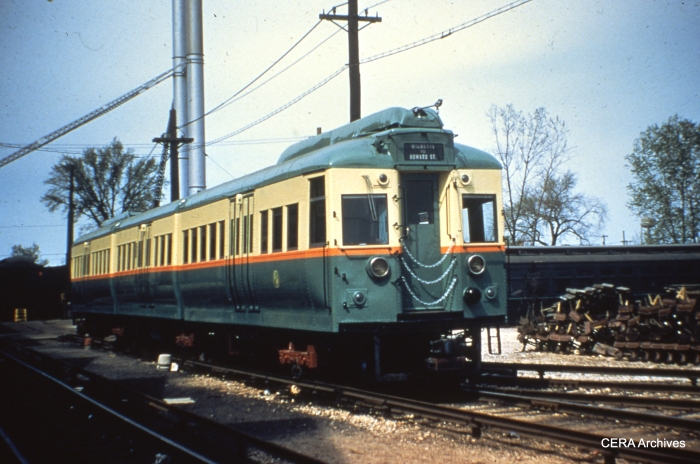
One of the four articulated 1947-48 “L” cars, signed for Evanston service, as it looked prior to being fitted with pantographs for Skokie Swift service. (CERA Archives)
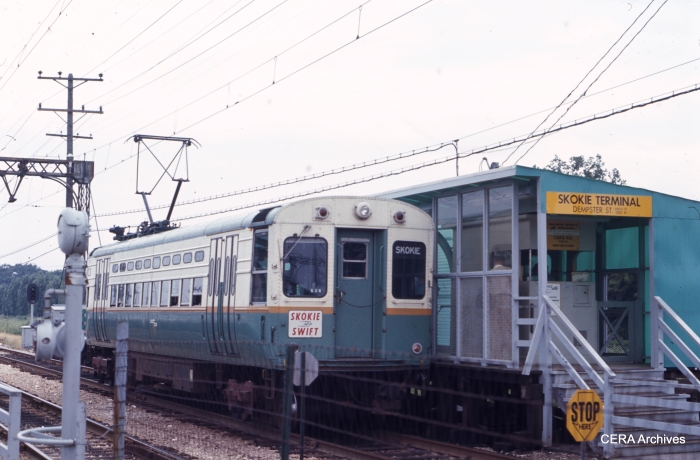
CTA 24 at the northern end of the line in August 1967. (CERA Archives)
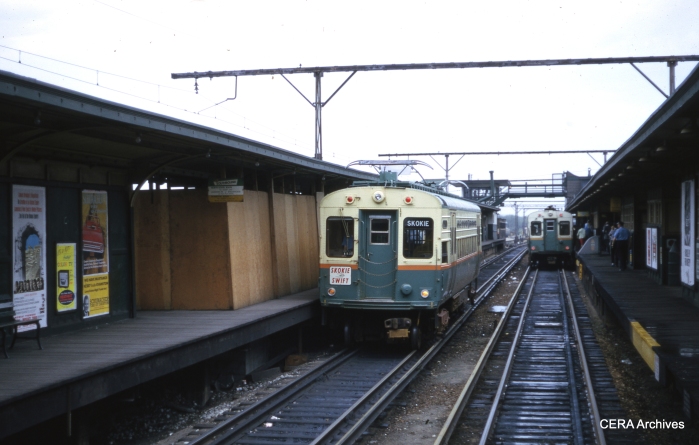
Skokie Swift trains at Howard in May 1964. (CERA Archives)
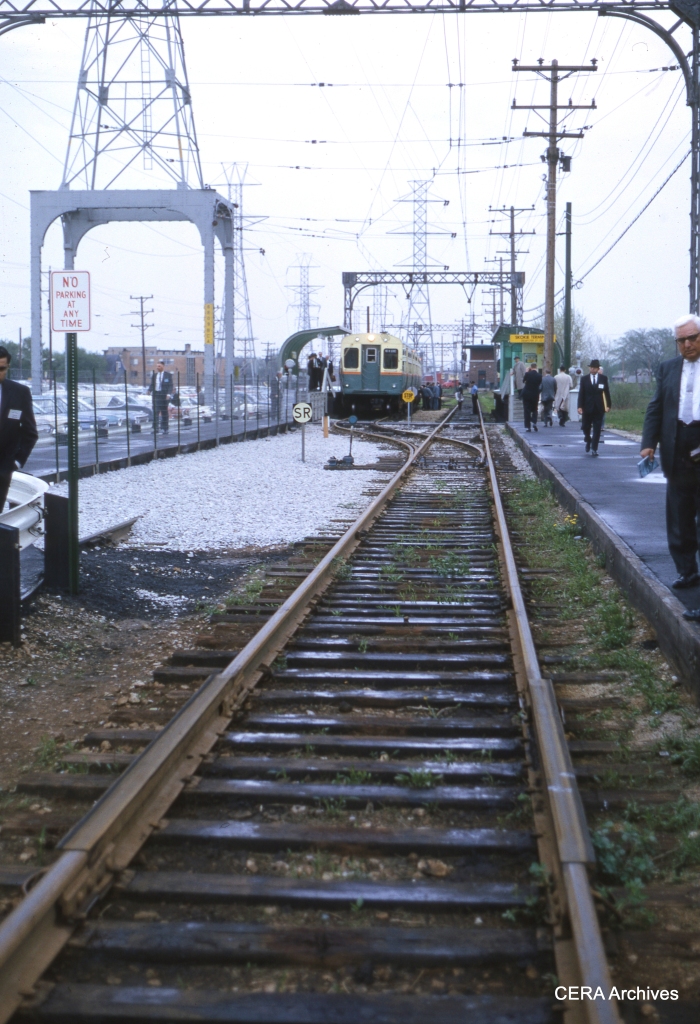
The Dempster terminal in May 1964. (CERA Archives)
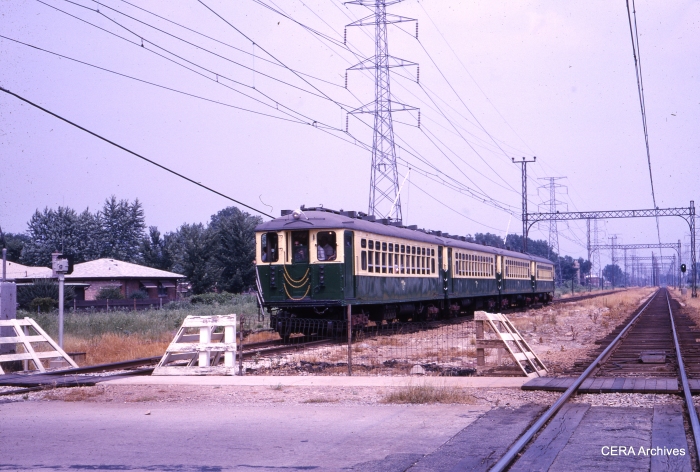
CTA 4269, 4270, 4281, and 4282 outbound at Kostner on July 3, 1966 on a fantrip. (CERA Archives)
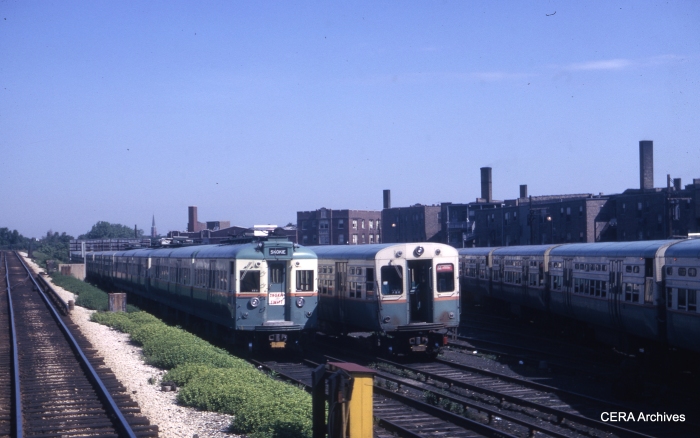
A Swift “artic” shares space in Howard yard with 6000s on June 20, 1966. (CERA Archives)

A fantrip train of 4000s, near Skokie Shops in August 1972. The sign hanging on front says, “This train stops at 35 for White Sox baseball today.” (Rex K. Nelson photo – CERA Archives)
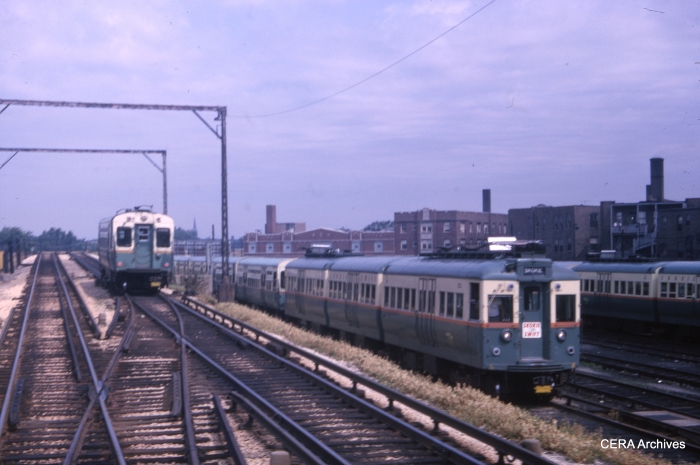
A CTA single car unit in Evanston service heads southbound approaching the Howard terminal in this July 17, 1965 view. One of the 51-54 series articulated cars used on the Skokie Swift is parked in the yard. (CERA Archives)
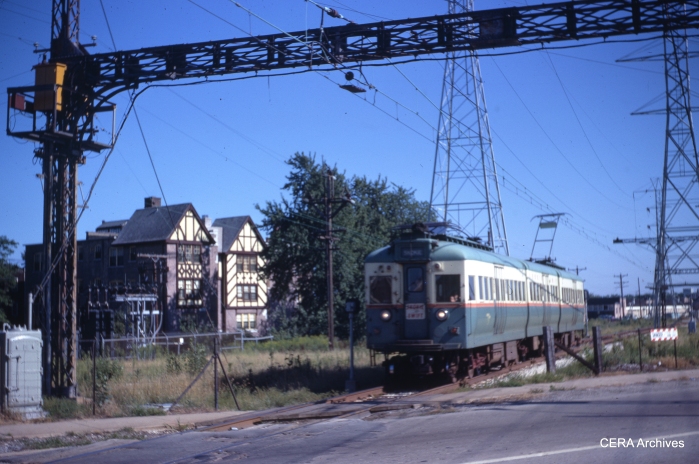
One of the four “artics” at Oakton in October 1968. (CERA Archives)
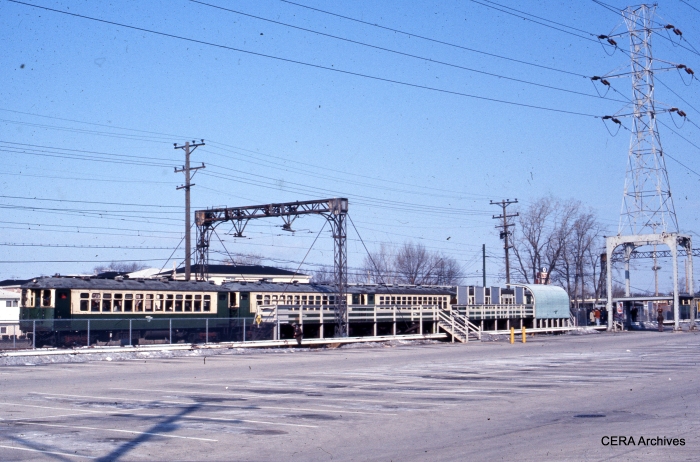
4000s at Dempster in fantrip service. (Rex K. Nelson Photo – CERA Archives)
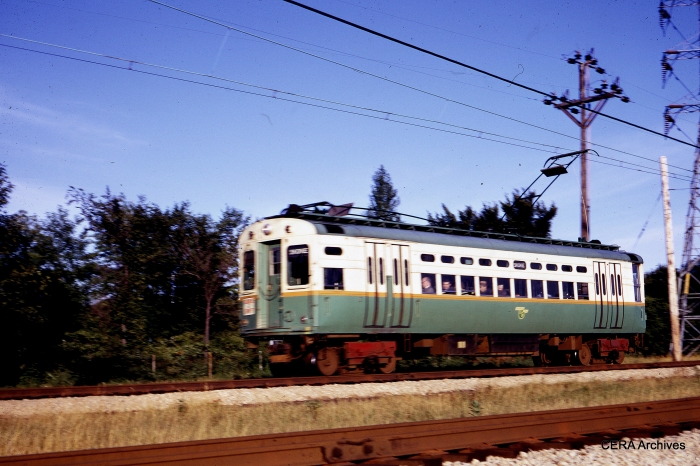
CTA 30 outbound near Oakton on August 12, 1968. (Stephen M. Scalzo Photo – CERA Archives)

A train of 4000s at Dempster on a fantrip in July 1971. (Gerald H. Landau Photo – CERA Archives)

CTA 25 is southbound from Dempster on March 16, 1968. (Stephen M. Scalzo Photo – CERA Archives)

The Swift crosses the North Shore Channel on July 27, 1964. (Stephen M. Scalzo Photo – CERA Archives)

CTA single car unit 29 is northbound approaching Dempster on February 3, 1968. (Stephen M. Scalzo Photo – CERA Archives)
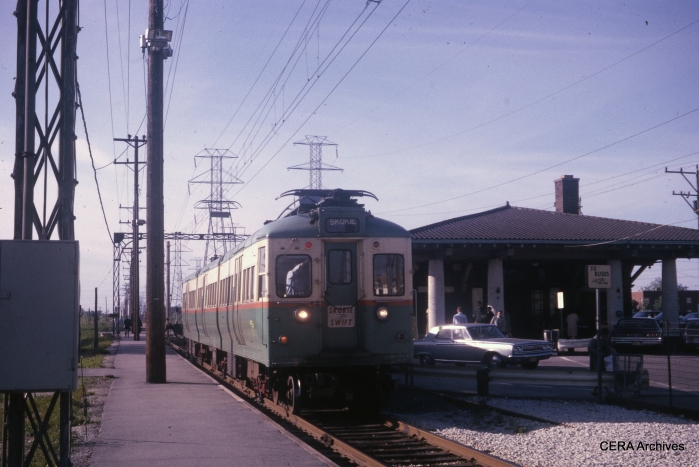
One of the four CTA articulated “Doodlebugs,” now fitted with pantographs, at Dempster in July 1966. (CERA Archives)
